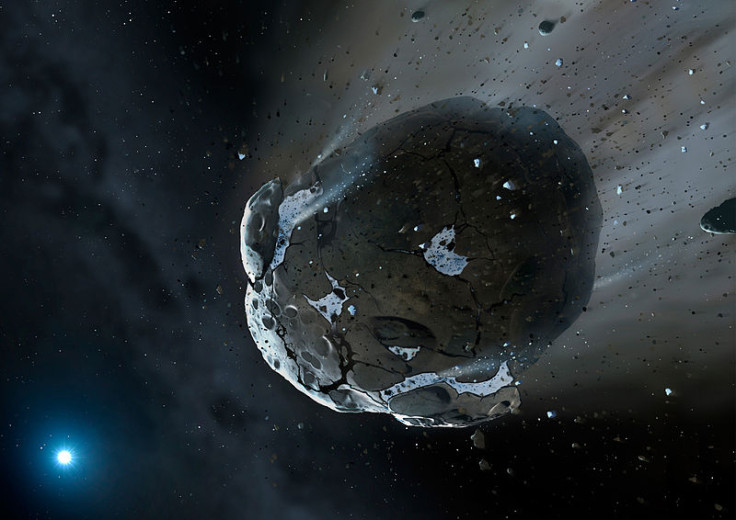What Killed the Dinosaurs? Post-Asteroid Collision 'Impact Winter' Caused Intense Global Cooling

The extinction of the dinosaurs was caused by an "impact winter" led to intense global cooling after a six-mile wide asteroid collided with Earth 66 million years ago, research has shown.
The study, led by researchers at Utrecht University in the Netherlands, is the first to provide physical evidence for the sudden plunge in global temperatures following the impact off the Yucatan Peninsula in Mexico.
According to the team, the effects of the strike would have been similar to those of a "nuclear winter". The phenomenon is caused by the emission of large amounts of dust into the Earth's stratosphere after a nuclear event, which reduces sunlight and cools the climate.
The impact, which occurred in what is now known as the Chicxulub crater, would likely have lowered global surface temperatures by as much as seven degrees. This change would have been catastrophic for creatures evolved to thrive in a warmer, greener climate.

The cold snap is thought to have lasted around two decades, long enough to wipe out the dinosaurs, as well as swimming and flying reptiles. The most adaptable creatures survived, evolving to the present day.
As reported by Live Science, previous studies have suggested the winter reduced the amount of sunlight reaching Earth's surface by as much as 80%.
"Ultimately, more than 50% of all plants and animals on Earth died out because of this," Dr Johan Vellekoop, a postgraduate student at Utrecht University and the team leader, told Live Science.
Researchers discovered evidence of the global cooling in sediments from the Brazos River, the longest river in Texas. Chemical analysis of the rocks, which are the same age as the asteroid impact, found ocean surfaces temperatures dropped by several degrees after the impact, compared to before.
The sedimentary rocks contain layers of broken shells, thought to have been discarded by a giant tsunami caused by the asteroid.
An estimate of post-impact sea surface temperatures were obtained by analysing fatty molecules from marine organisms preserved in the rocks.
Dr Vellekoop said the winter would have been a contributing cause of the mass extinction at the Cretaceous-Paleogene (K-Pg) boundary.
"The layer of sand and shells we found was deposited by tsunamis caused by the meteorite impact," Vellekoop explained to the Financial Express. "In the rocks just above that layer we measured high concentrations of iridium, a mineral originating from the meteorite itself. That's how we knew for sure we were looking at the right layers."
High concentrations of iridium were also found in the sediments, produced as the asteroid vapourised.
Dr Johan Vellekoop concluded: "The global impact winter, characterised by darkness and a dramatic cooling of ocean surface waters, perturbed a relatively stable, warm, latest Cretaceous climate and likely represented a major stress factor for life on Earth."
The research was published in the journal Proceedings Of The National Academy Of Sciences.
© Copyright IBTimes 2025. All rights reserved.






















